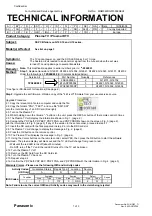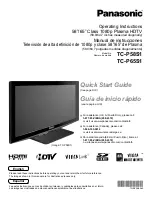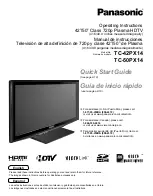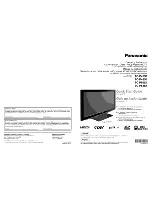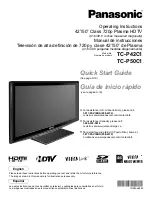
9
E
ngl
ish
França
is
HOW TO SETUP YOUR NEW HITACHI PLASMA TELEVISION
VIEWING
The major benefit of the HITACHI Plasma Television is its large viewing screen. To see this large screen at its best, test various
locations in the room to find the optimum spot for viewing. The best picture is seen by sitting directly in front of the TV and about 8 to 18
feet from the screen.
During daylight hours, reflections from outside light may appear on the screen. If so, drapes or screens can be used to reduce the
reflection or the TV can be located in a different section of the room.
If the TV’s audio output will be connected to a Hi-Fi system’s external speakers, the best audio performance will be obtained by placing
the speakers equidistant from each side of the receiver cabinet and as close as possible to the height of the picture screen center. For
best stereo separation, place the external speakers at least four feet from the side of the TV, place the surround speakers to the side or
behind the viewing area. Differences in room sizes and acoustical environments will require some experimentation with speaker
placement for best performance.
IMPORTANT NOTES
No. Items
Notes
1
Arching sound from
plasma
television
panel.
A buzzing sound might be heard when the plasma television is turned on in a very quiet
room. This is due to the
plasma display panel drive circuit when it is functioning. This arching sound
is normal and it is not a malfunction.
2
Interference for infrared
equipment.
Some infrared rays are emitted from the plasma television’s panel that might affect other
infrared controlling
equipment.
3
Bright and dark spots
High-precision technology is used to manufacture the plasma display panel; But in some cases, there are minor
defects in some parts of the screen. Points that do not light, points with brightness different from that of the
periphery, points with color different from that of the periphery, etc. Some pixels will always be on or always off.
Please note that this is not a malfunction.
4
Picture Image (Spectrum)
When receiving still picture signals, (e.g. channel number indication or clock indication) for a while, you can see
image-like when the picture varied. This is not a defect.
5
Display panel surface
temperature is too high
The plasma display panel is lighting the phosphors by the discharge of internal radiation. In
some cases, this may
cause the temperature of the panel surface to increase. Please note
that this is not a malfunction. The Plasma TV
surface temperature is higher than a
Cathode-ray-tube.
6
Plasma Surface
The plasma display panel is made from glass. Heavy shock on the front panel might damage it.
7
Transportation
When the plasma television is transported horizontally, the glass panel has the possibility of being broken or
increasing the picture defects. At the time of transportation, horizontal style is prohibited. More-over, please treat
the plasma panel with great care because of a precision apparatus. Please instruct transporters so that it should
be put into the packing box at the time of shipment. (There is a possibility that breakage of the panel or defects will
increase.) Rough transportation might cause damage to the panel and pixel failure.
8
Image retention
The plasma
TV
illuminates phosphor to display images. The phosphor has a finite illumination life. After extended
periods of illumination, the brightness of the phosphor will be degraded to such extent that stationary images
would burn-in that part of the screen as grayed-out images.
Tips to prevent such image retention are:
- Do not display images having sharp brightness differences or hi-contrast images, such as monochrome
characters and graphic patterns, for long.
- Do not leave stationary images appearing for long, but try to refresh them at appropriate intervals of time, or try to
move them using screen saver function.
- Turn down the contrast and brightness controls.
9
Luminosity and contrast
Plasma television has luminosity and low contrast compared with CRT television.
10
Granular spots
When a screen is seen at point-blank range, a random fine grain may be visible to a dark part.
11
Disturbance to video apparatus
If an apparatus (VCR, etc.) antenna line is arranged near the
PDP TV
, the image may shake,
or disturbance may
be received.
12
Lip Sync
There is some time lag between the picture and the sound. You can see lip motion that is
delayed compared to the sound.
13
About the use
environment of
plasma
television (temperature)
Electric discharge/luminescence characteristic of the plasma display panel also changes with peripheral
temperature. Moreover, since there is also high power consumption value, a specified
temperature environment is
required.
14
Caution on prolonged
storage
Storing the plasma television for a period of more than 2 to 3 months without use might cause
an unstable picture
when the set is turned on.
15
Operating
Operating altitude: 800 to 1,114hPa (6,194ft to -2,484ft). Operating temperature: 41°F to 95°F.
16
Storage
Storage Altitude: 300 to 1,114hPa (31,912ft to -2,484ft). Storage temperature: 5°F to 140°F.
17
Power ON or OFF
Frequent use of the Power ON or OFF might trigger the power protection circuit. If the TV
does not turn ON, please wait a little before turning ON again.


























